The American Radio Relay League (ARRL) is the largest membership association of amateur radio enthusiasts in the United States. ARRL is a non-profit organization, and was co-founded on April 6, 1914, by Hiram Percy Maxim and Clarence D. Tuska of Hartford, Connecticut. The ARRL represents the interests of amateur radio operators before federal regulatory bodies, provides technical advice and assistance to amateur radio enthusiasts, supports a number of educational programs and sponsors emergency communications service throughout the country. The ARRL has approximately 161,000 members. In addition to members in the US, the organization claims over 7,000 members in other countries. The ARRL publishes many books and a monthly membership journal called QST.
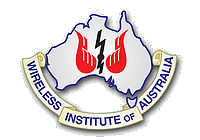
The Wireless Institute of Australia (WIA) was formed in 1910, and is the first and oldest national amateur radio society in the world. It represents the amateur radio operators of Australia as the AR "peak body" in dealings with the Australian Communications and Media Authority (ACMA), the authority under the government of Australia that administers communications within and external to Australia. The WIA publishes a bi-monthly journal for its membership called Amateur Radio. The organisation is the national society representing Australia in the International Amateur Radio Union.
In broadcasting and radio communications, a call sign is a unique identifier for a transmitter station. A call sign can be formally assigned by a government agency, informally adopted by individuals or organizations, or even cryptographically encoded to disguise a station's identity.

In times of crisis and natural disasters, amateur radio is often used as a means of emergency communication when wireline, cell phones and other conventional means of communications fail.
The New Zealand Association of Radio Transmitters (NZART) is a non-profit organisation of amateur radio enthusiasts in New Zealand. It represents New Zealand amateur radio operators nationally and internationally. NZART is a founding member of the International Amateur Radio Union. It is an association of individual members, however those members are encouraged to form local branches.

An amateur radio repeater is an electronic device that receives a weak or low-level amateur radio signal and retransmits it at a higher level or higher power, so that the signal can cover longer distances without degradation. Many repeaters are located on hilltops or on tall buildings as the higher location increases their coverage area, sometimes referred to as the radio horizon, or "footprint". Amateur radio repeaters are similar in concept to those used by public safety entities, businesses, government, military, and more. Amateur radio repeaters may even use commercially packaged repeater systems that have been adjusted to operate within amateur radio frequency bands, but more often amateur repeaters are assembled from receivers, transmitters, controllers, power supplies, antennas, and other components, from various sources.

The Trinidad and Tobago Amateur Radio Society, Inc. (TTARS) is the national amateur radio organization in the Republic of Trinidad and Tobago. It is a member society of the International Amateur Radio Union (IARU).

A QSL card is a written confirmation of either a two-way radiocommunication between two amateur radio or citizens band stations; a one-way reception of a signal from an AM radio, FM radio, television or shortwave broadcasting station; or the reception of a two-way radiocommunication by a third party listener. A typical QSL card is the same size and made from the same material as a typical postcard, and most are sent through the mail as such.

Amateur Radio Emergency Communications (AREC), formerly the Amateur Radio Emergency Corps, is a service provided by the New Zealand Association of Radio Transmitters (NZART) which provides trained radio communicators and communication systems for emergency situations.
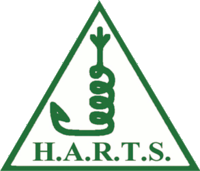
The Hong Kong Amateur Radio Transmitting Society is an organization representing a majority of the amateur radio operators in Hong Kong. HARTS is a charitable institution recognized by the Inland Revenue Department since early 2008. HARTS was established in the Oct 1929, when Hong Kong was a dependent territory of the United Kingdom. HARTS is the member society representing Hong Kong in the International Amateur Radio Union.
The Radioamateurs du Luxembourg (RL), originally founded in 1937 as Réseau Luxembourgeois des Amateurs d'Ondes Courtes, is a national non-profit organization for amateur radio enthusiasts in Luxembourg. RL supports amateur radio operators in Luxembourg by operating the RL QSL Bureau for those members who regularly communicate with amateur radio operators in other countries, sponsoring amateur radio operating awards and radio contests, and supporting radio propagation beacons in Luxembourg. RL represents the interests of amateur radio operators in Luxembourg before local and international telecommunications regulatory authorities. RL is the national member society representing Luxembourg in the International Amateur Radio Union.
The Radio Club Peruano (RCP) is a national non-profit organization for amateur radio enthusiasts in Peru. RCP was founded on December 6, 1930, and the first General Meeting of the organization was held in the halls of the Library of the Geographical Society in Lima, Peru in January, 1931. The RCP operates a QSL bureau for those amateur radio operators in regular contact with amateur radio operators in other countries, and supports amateur radio operating awards and radio contests. Radio Club Peruano represents the interests of Peruvian amateur radio operators before national and international regulatory authorities. RCP is the national member society representing Peru in the International Amateur Radio Union.

Amateur radio, also known as ham radio, is the use of the radio frequency spectrum for purposes of non-commercial exchange of messages, wireless experimentation, self-training, private recreation, radiosport, contesting, and emergency communications. The term "amateur" is used to specify "a duly authorized person interested in radioelectric practice with a purely personal aim and without pecuniary interest"; and to differentiate it from commercial broadcasting, public safety, or professional two-way radio services.
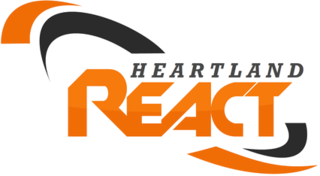
Heartland REACT was a chapter of REACT International based in Omaha, Nebraska. It was founded in 1967 as Douglas County REACT and incorporated as a non-profit organization in 1972 to provide communications as a public service in the event of emergency and non-emergency events around the Omaha metro area. The Omaha chapter of REACT International was dissolved in 2021 and the organization was reformed as Heartland READY.
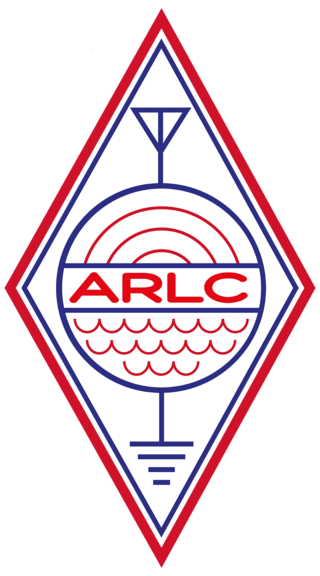
The Associação de Radioamadores da Linha de Cascais, aka ARLC and Cascais Amateur Radio Association, was founded on 28 December 2011 to promote ham radio activity especially for youngsters, unite all amateurs, work with emergency authorities, and to support amateur radio and science investigation.
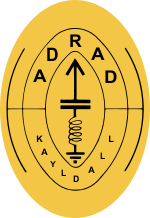
The Association des Radioamateurs du Kayldall (ADRAD) is a local non-profit organization for amateur radio enthusiasts in Luxembourg. The ADRAD was founded on March 30, 1979.
The LX National QSL Bureau provides a service by volunteers to exchange amateur radio QSL cards between Luxembourgish amateur radio operators and amateur radio operators from the world. The LX National QSL Bureau was founded in July 2014 by the Association des Radioamateurs du Kayldall (ADRAD) and by the Luxembourg Amateur Radio Union (LARU).
Broadcast call signs are call signs assigned as unique identifiers to radio stations and television stations. While broadcast radio stations will often brand themselves with plain-text names, identities such as "cool FM", "rock 105" or "the ABC network" are not globally unique. Another station in another city or country may have a similar brand, and the name of a broadcast station for legal purposes is normally its internationally recognised ITU call sign. Some common conventions are followed around the world.
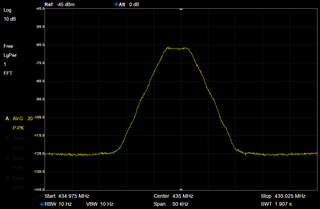
M17 is a digital radio modulation mode developed by Wojciech Kaczmarski et al. M17 is primarily designed for voice communications on the VHF amateur radio bands, and above. The project received a grant from the Amateur Radio Digital Communications in 2021 and 2022. The protocol has been integrated into several hardware and software projects. In 2021, Kaczmarski received the ARRL Technical Innovation Award for developing an open-source digital radio communication protocol, leading to further advancements in amateur radio.












